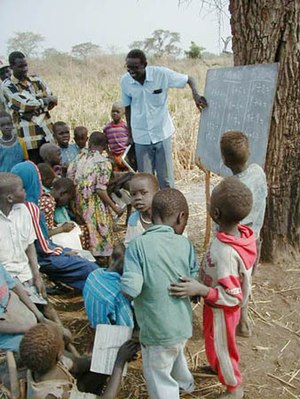Free content defined
| WikiEducator Tutorials | ||
|---|---|---|
| Tutorial 12 | Introduction | Freedom as concept | Free content defined | Licenses | Free software and Free content | Summary & FAQs | |
This tutorial is a freely licensed work, as explained in the Definition of Free Cultural Works.
| A message from Erik Möller
Erik Möller of the Wikimedia Foundation and Open Progress explains the Definition of Free Cultural Works, and why it matters to the global community. Click on the audio link below to start the download of the audio file. Not recommended for dialup connections!
Or download the Audio clip for playback on your desktop. |
Creators of free content are encouraged to use this reference to the definition. What constitutes free content can become confusing, especially where digital content is concerned, therefore we recommend that you study this resource carefully.
Education and sharing of knowledge
<kaltura-widget align="R" size="L" kalturaid="eoaqykzixw" /> The sharing of knowledge is not a new phenomenon. In our daily lives, we share knowledge freely, including:
- when a parent intervenes in the upbringing of child; or
- when a teacher presents a lesson;
- when a student uses what he/she has learned and adapts it to his/her local context.
Fortunately, when we share knowledge, we can still use it for our own benefit and use.
Knowledge grows with reuse. Therefore, it is considered sustainable and scalable.
Sadly, much of the world's knowledge is locked behind restrictive copyright provisions - and much of this knowledge is inaccessible and unaffordable, particularly for the majority of citizens in the developing world. Moreover, these copyright provisions have not kept pace with advances in digital technology.
We invite you to view the short video of Archbishop Desmond Tutu, Vice Chancellor of the University of the Western Cape in South Africa on the importance of freedom in education during the opening of the Digital Freedom Exposition, held in Cape Town, 2007.
For those of us who believe that education is a common good (and are interested in working together in the creation of free content for education), these advances in digital technology and collaborate authoring software are timely and welcome. WikiEducator is building on the experiences of the free software movement and a few smart licensing options designed to protect the freedom of content resources, to make considerable progress in achieving our #1 Strategic Goal: a free version of the education curriculum by 2015.
The WikiEducator Tutorials are designed to support you in acquiring the skills to help us achieve our Strategic Goal.
Defining free content (Free Cultural Works)

The Definition of Free Cultural Works is a project, not unlike the Free Software Definition, which set out to resolve the ambiguity associated with the concept of "free content".
There is growing international interest in the concept of "Open Educational Resources" (OERs) [1], which was first adopted at UNESCO's 2002 Forum on the Impact of Open Courseware for Higher Education in Developing Countries. However, not all resources that carry the label of OERs meet the requirements of the Free Cultural Works (Free Content) definition. Therefore it is necessary to clarify what we mean by free content.
The WikiEducator community subscribes to the Free Cultural Works Definition and it is important for contributors in this community to know what we mean by free content.
Requirements of the free content definition
In order for a resource to meet the requirements of the free content definition, it must:
- Meet all the requirements specified below, that is the essential freedoms, permissible restrictions and additional technical requirements; and
- It must carry a free content license, which is a legal instrument whereby the legal owner of the resource grants specific freedoms in accordance with the requirements of the free content definition below. We will cover selected examples of acceptable free content licenses in the next subsection of the tutorial.
These are the requirements of the Free Cultural Works Definition:
Essential freedoms
| Essential freedoms
In order to be recognized as "free" under this definition, a license must grant the following freedoms without limitation:
|
Permissible restrictions
| Permissible Restrictions
Apart from these allowed restrictions, the license must not include clauses that limit essential freedoms. Especially, it must not specify any usage restrictions (such as prohibiting commercial use of the work, restricting use depending on political context, etc.).
|
Additional conditions
| Additional conditions
While adhering to the essential freedoms, a specific work may be non-free in other ways that restrict the essential freedoms. These are the additional conditions in order for a work to be considered free:
|
A few Open Education Resource (OER) projects are listed below. Visit their respective websites and assess whether the projects meet the requirements of the free content definition:
|
MIT's OpenCourseWare project does not meet the requirements of the free content definition - because it uses a non-commercial restriction in its license. Furthermore, there are closed format files included in many of the resources which do not meet the additional conditions listed above. Connexions content does meet the requirements of the definition. The OER Commons is a portal which directs users to resources on the web. The portal contains numerous resources, but not all meet the requirements of the free content definition. The resources are searchable by conditions of use.
This brings us to the important topic of licensing which will be covered in the next subsection.

